Business writing can be challenging! Happily, several new inexpensive or free business writing tools are available to help you write better at work.
These are the tools I use and recommend to clients in our business writing courses.
Planning and Editing
ChatGPT
If used well, ChatGPT is by far the most versatile and useful tool in a business writer's toolbox. It offers support throughout the writing process by generating content, refining ideas, and ensuring clarity. It can assist in drafting emails, reports, proposals, and presentations, tailoring tone and style to specific audiences. Business writers can leverage ChatGPT for brainstorming, overcoming writer’s block, and producing content more efficiently. Learn more about tips for writing with ChatGPT here.
Despite its benefits, ChatGPT has some significant risks for business writers. It can't replace the critical thinking necessary for good business writing. It tends to generate content that sounds plausible but may contain inaccuracies or lack nuanced understanding of industry-specific topics, leading to misinformation. Privacy and confidentiality are also concerns, particularly when dealing with sensitive business information.
While ChatGPT is helpful, human oversight and expertise remain crucial when using this tool.
Document Planning and Concept Presentation
Quickly create maps that represent the structure of your documents. Freemind is a free mind-mapping (also called concept mapping) tool that will create a visual representation of an idea, and all the interconnected links. If you do any analytical writing at work, this tool is invaluable. For report and proposal writing, this tool is indispensable.
A good mind-mapping tool must be simple to use because you need to map as fast as your mind is firing or you’ll lose that wonderful interconnectivity of ideas. Freemind is simple to use. It will import into proprietary products like MindManager, so your information will never be trapped inside Freemind alone. Our video tutorial will show you how to use this helpful tool in less than ten minutes.
Mindmeister is another paid mind mapping tool that is particularly helpful to develop maps collaboratively. Collaborate online with someone or share a map for review, much like Google Docs, with no need for file transfer.
Managing Information Overflow
Evernote is one of my most used tools. I’d be lost without it.
Store all the random ideas and information you want to save for both work and home. For me, that’s research, course improvement ideas, writing quotes that I like, recipes, yoga sequences, a photo of a nice bottle of wine at dinner, or travel inspiration articles. Evernote is a well organized memory holder with fantastic search capability. Clip notes from the web, store a picture, a file, or an audio file reminding yourself about an insight.
For example, I vaguely remember reading something interesting about formatting information in tables in reports. When I search “format reports,” my notes on WiT (words in tables) that I took at a conference and an article I saved from the Internet pops right up. Similarly, if I have too much kale in the refrigerator, I can search “kale” to pull all my recipes that contain kale.
Create multiple notebooks and tag anything to cross-reference easily.
Evernote is indispensable to a business writer. It will help you contain the deluge of information we all face and retrieve it when you need it.
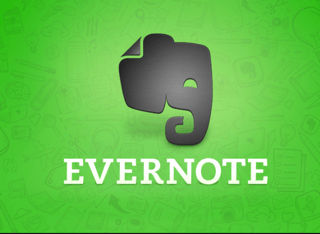
Email Tools
The free version of Hubspot tracks your last 200 emails sent and alerts you when a recipient opens an email or clicks on a link. It’s very helpful to determine if you need to follow up. The free version includes five email templates.
Rapportive was a much-loved free tool that was purchased by LinkedIn several years ago and is no longer available. Hubspot Sales add-on now provides the same features, instantly giving you contextual information about contacts right inside your inbox.
When you receive an email from someone, Hubspot Sales appears on the right side of your screen and names the sender, states their position and company, identifies the sender's location, and shares LinkedIn, Twitter, Facebook, Skype, and website links.
Instantly gain contextual information about your email contacts to ensure you provide the information they need.
It's is a bit big-brother-watching, but millions of people use this add-on tool to streamline email communication and help develop a better rapport with contacts.

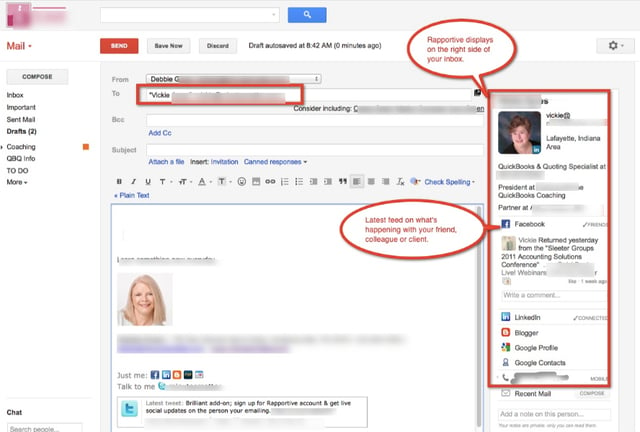
Gmail calls its template tool “canned responses.” This feature is handy if you repeatedly send a similar message.
Of course, be sure to update any email based on a template to match your reader's needs and proofread very carefully. Templates are a common area for typos because your eye is so familiar with the text that it’s easy to miss an error.
To setup "canned responses" first click the gear icon. It's in the top right-hand corner of your Gmail. Then
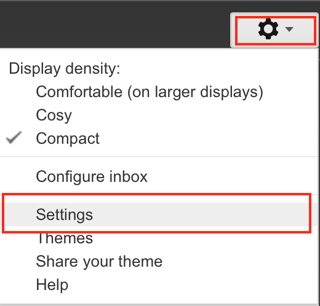
Then you will be in the settings menu. Click the "labs label" and then enable "canned response." Do not forget to scroll to the bottom of the page and save the settings.
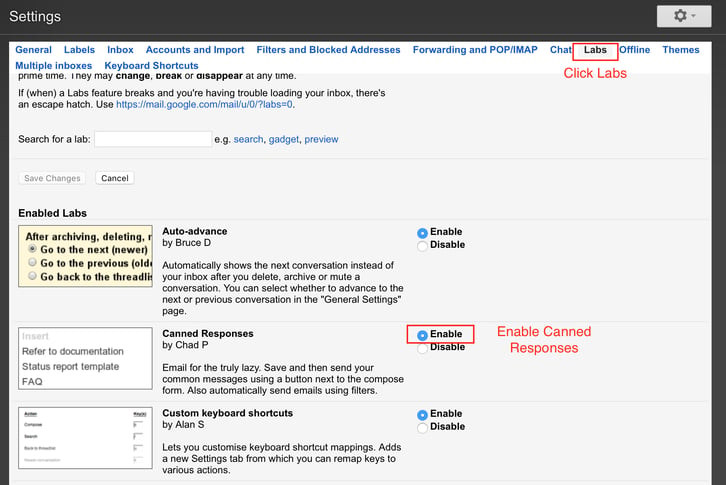
For a full tutorial, see the canned response tutorial from Hubspot.
Grammar and Spell-Checking Tools
Every business writer should use a grammar and spell-checker tool.
The free version is better than Microsoft Office's Editor tool, although Editor has been greatly improved in the past few years. Grammarly will help you find 100 critical grammar and spelling errors. It will catch typos and mistakes that you might miss. It will also help you proofread and edit faster and more accurately.
You can download a free trial of Grammarly here.
The paid version flags 100+ advanced grammar and spelling errors. I use the paid version, and it has caught repetitive words and subtle errors that slipped past me and other instructors in the daily rush of business writing. It also identifies patterns where we tend to miss correction opportunities.
Caveat: Like all automated tools, it will highlight and suggest a correction. Ultimately you, as the writer, need to understand grammar well enough to accept the correction suggestion or not.
In the image below, notice how Grammarly flagged the double word help in paragraph one. However, Grammarly's hyphen correction in paragraph two is incorrect. The algorithm obviously thinks it's a typo of the prefix mis- (mis-information). Grammarly is not infallible.

Microsoft Word Readability Assessment
By default, the "Spelling & Grammar Check" feature is enabled in both Microsoft Word and Outlook, and of course, you should always run it to check for typos and errors. The Readability Measurement must be enabled in the preferences settings in Word and Outlook. It will additionally assess:
- Words per sentence (average)
- Percentage of passive sentences
- Flesch Reading Ease score
- Flesch-Kincaid Grade Level.
These measurements give you a good snapshot report on the clarity of your writing. Review the score meanings here.
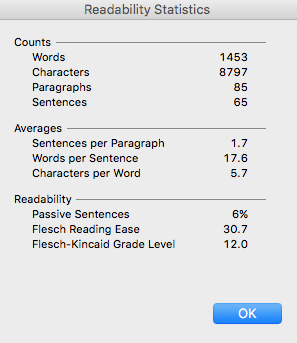
Grammar Websites
By far, the best grammar resource on the Internet is Purdue University’s Online Writing Lab. It includes explanations and exercises. You can trust this site to provide correct grammar information.
Join over 20,000 monthly readers of Instructional Solutions Business Writing Info Blog for current business writing advice and tips.
Tone and Clarity
All of these tone and clarity tools are very useful, but use caution. Skilled writers have the ability and confidence to play with language in ways the tool can't assess. The Gettysburg Address, for example, ranks poorly in all these tools.
That said, I often discover some bloat remnants in my writing when I use these tools, especially the Hemingway App.
We built the Jargon Grader to help eliminate jargon from your professional writing. It is a free tool that checks your text against a curated list of 700+ common jargon terms. You can watch our video below on how to use it.
Unsuck It is an admittedly rude, but very useful, tool that assesses business writing jargon and suggests meaningful words. In September, 2024 they archived past jargon tools and are relaunching soon as a paid app.
The archived past jargon tools are still helpful.
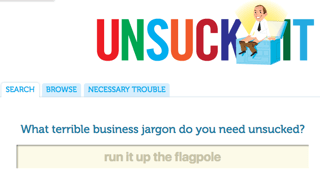
Eliminate bloat. Copy and paste a document into this free app, and it will identify overly complex sentences, flag both passive voice and adverbs, and offer simpler alternatives.
The tool is named after Ernest Hemingway, famous for his clear, simple direct prose style – and it suggests ways to bring a similar clarity, simplicity and directness to your business writing.
Very similar to the Hemingway App, but it also lists the number of verbs, nouns, prepositions, adverbs/adjectives, and the often imprecise “is, this, that, there.” It will assess documents 100-1000 characters long.
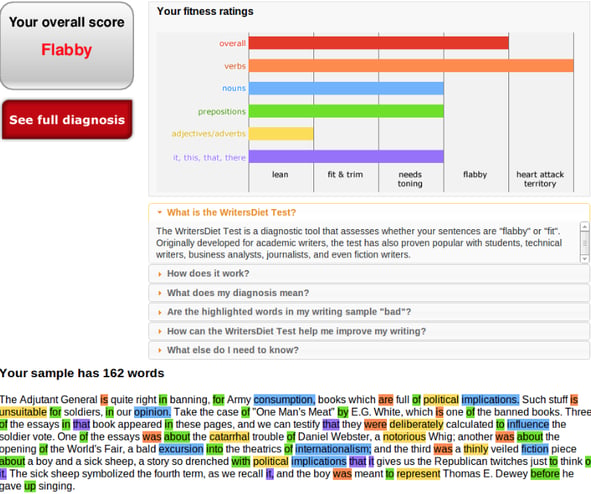
Editing
An easy-to-use online dictionary.
A good database of alternative words to keep your business writing interesting. Be careful not to fall into the trap of believing that a large vocabulary and big words are the key to business writing. Business writing is powered by short words used well.
This definitive style guide to email or websites or anything published requires a subscription, but it will ensure consistency across your documents.
An Internal Style Guide
Every company coins unique product or service names and needs to ensure everyone in the company uses those terms consistently. Creating a simple internal style guide for your unique terms or style preferences will help everyone understand expectations.
One person needs to maintain this document and make sure the current version is available to everyone at the company.
Download a copy of this Business Writing Style Guide Internal Template.
My Most Used Business Writing Tools
The four tools I use most:
- Mindmeister for concept mapping
- Evernote for storing information
- Grammarly for grammar and spell-checking
- ChatGPT for streamlining simple transactional emails
While I could write at work without these tools, it would be much harder!
I hope these tools help you improve your business writing.
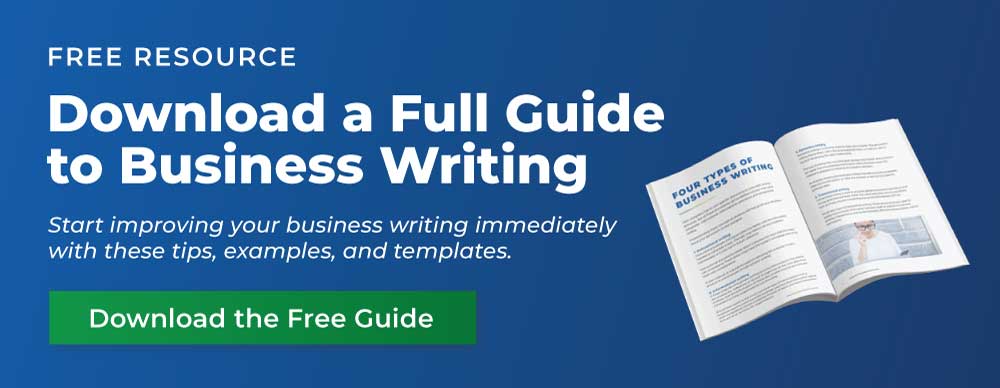
![18 of the Best Business Writing Tools [Updated 2025]](https://www.instructionalsolutions.com/hubfs/2017_images/Blog_2016/BEST%20BUSINESS%20WRITING%20TOOLS.png)
![18 of the Best Business Writing Tools [Updated 2025]](https://www.instructionalsolutions.com/hubfs/2017_images/Blog_2016/BEST%20BUSINESS%20WRITING%20TOOLS.png)